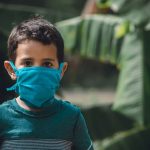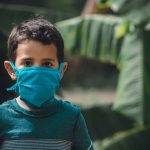What is Child Protection?
What is Child Protection? Child protection is the safeguarding of youngsters from violence, exploitation, abuse, and neglect. Article 19 of the UN Convention on the Rights of the Child provides for the protection of youngsters out and in of the house. One of the methods to make sure that is by giving them high quality schooling, the fourth of the United Nations Sustainable Development Goals, along with different child protection techniques.
Child safety techniques are a set of normally government-run companies designed to guard kids and younger people who find themselves underage and to encourage household stability. UNICEF defines a ‘child protection system’ as:
the set of legal guidelines, insurance policies, laws and companies wanted throughout all social sectors – particularly social welfare, schooling, well being, safety and justice – to help prevention and response to protection-related dangers. These techniques are part of social safety, and prolong past it. At the extent of prevention, their intention contains supporting and strengthening households to cut back social exclusion, and to decrease the danger of separation, violence and exploitation. Responsibilities are sometimes unfold throughout authorities companies, with companies delivered by native authorities, non-State suppliers, and neighborhood teams, making coordination between sectors and ranges, together with routine referral techniques and so forth.., a crucial part of efficient child protection techniques.
— United Nations Economic and Social Council (2008), UNICEF Child Protection Strategy, E/ICEF/2008/5/Rev.1, par. 12-13.
A 2014 European Commission survey on little one safety techniques listed the next classes of youngsters needing assist:[5]
- Child victims of sexual abuse/exploitation
- Child victims of neglect or abuse
- Child victims of trafficking
- Children with disabilities
- Children in a situation of migration
- Unaccompanied kids in a state of affairs of migration
- Children without parental care/in various care
- Children in police custody or detention
- Street kids
- Children of fogeys in jail or custody
- Children in judicial proceedings
- Children in or liable to poverty
- Missing kids (e.g. runaways, kidnapped kids, unaccompanied kids going lacking)
- Children affected by custody disputes, together with parental little one abduction
- Children left behind (by mother and father who transfer to a different EU nation for work)
- Children belonging to minority ethnic teams, e.g. Roma
- Child victims of female genital mutilation or compelled marriage
- Children who usually are not in obligatory education or training or working kids under the authorized age for work
- Child victims of bullying or cyberbullying
Views: 13










